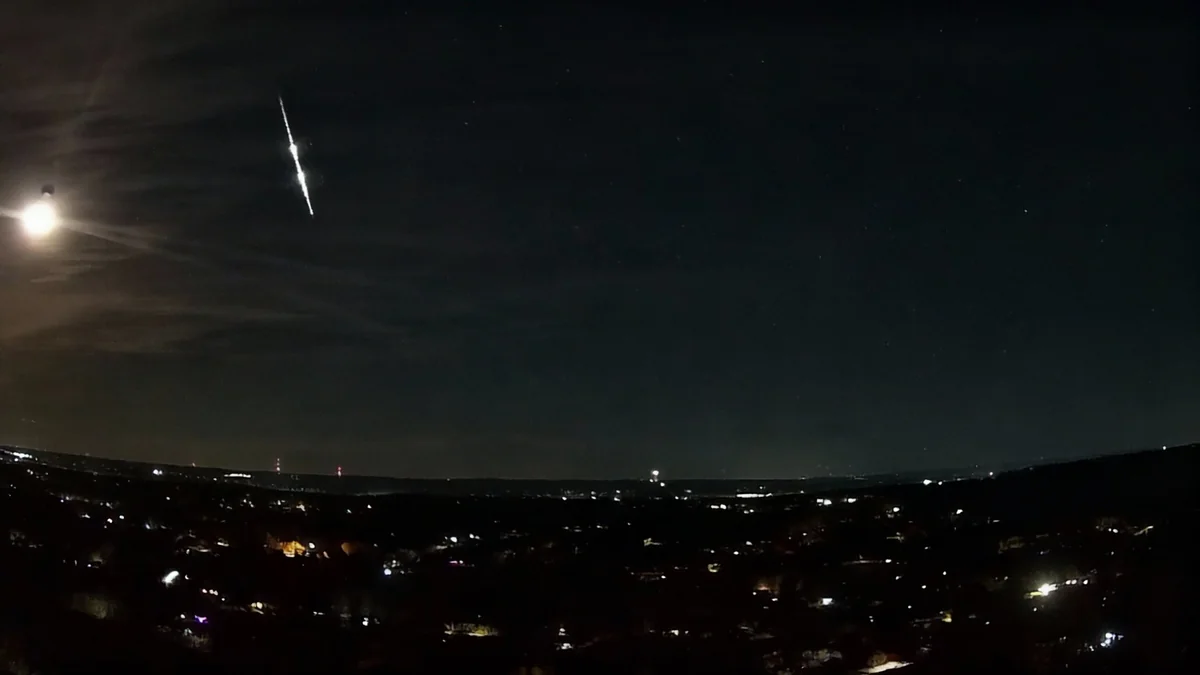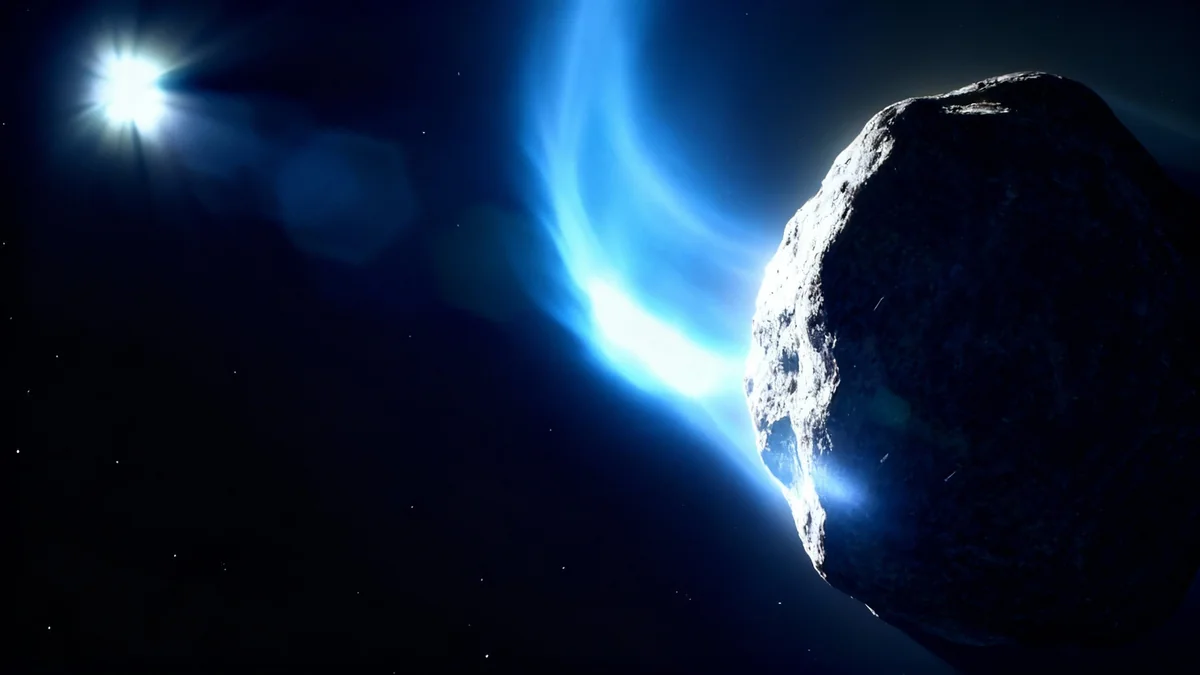Astronomers have confirmed the existence of a small asteroid, designated 2025 PN7, that is currently accompanying Earth on its journey around the Sun. This object, often called a quasi-moon, was officially spotted on August 2, 2025, but analysis of earlier data shows it has been in our planet's vicinity for approximately 60 years.
While it isn't a true moon gravitationally bound to Earth, its synchronized orbit makes it a fascinating, long-term companion. The asteroid is expected to remain near our planet for another six decades before its path diverges.
Key Takeaways
- A newly discovered asteroid, 2025 PN7, is acting as a temporary "quasi-moon" for Earth.
- The object is small, measuring only 50 to 100 feet wide, and has been near Earth for about 60 years.
- It doesn't orbit Earth directly but follows a similar path around the Sun in a 1:1 orbital resonance.
- This quasi-moon is part of a rare group of asteroids known as the Arjuna class, which have Earth-like orbits.
- Scientists project it will remain a companion to Earth for roughly another 60 years, making its total visit about 128 years.
Understanding Earth's New Companion
The discovery of 2025 PN7 adds another object to the short list of known space rocks that temporarily share Earth's orbital space. The finding was made by the Pan-STARRS telescope in Hawaii, a system designed to detect near-Earth objects. Though the initial observation was recent, scientists were able to trace its presence in previous astronomical data, revealing its long, quiet history as our neighbor.
This object is not a moon in the traditional sense. Our Moon is gravitationally locked to Earth, orbiting our planet directly. In contrast, 2025 PN7 orbits the Sun. However, its orbital period is almost identical to Earth's—about one year. This phenomenon, known as a 1:1 orbital resonance, means it keeps pace with our planet, appearing to loop around us from our perspective on the ground.
What is a Quasi-Moon?
A quasi-moon, or quasi-satellite, is an asteroid that orbits the Sun but remains close to a planet for an extended period. Its orbit is not stable in the long term. Due to gravitational interactions and its specific orbital path, it appears to follow the planet, but it is not captured by the planet's gravity like a natural satellite. Other known quasi-moons of Earth include Kamoʻoalewa and 2023 FW13.
A Closer Look at 2025 PN7
The physical characteristics of 2025 PN7 explain why it remained hidden for so long. It is an incredibly small and dim object. With a width estimated between 50 and 100 feet, it is comparable in size to a semi-truck or a small house. Its faintness made it difficult for telescopes to detect until now.
Its orbital behavior is also complex. The asteroid's path relative to Earth is not a simple circle. Over time, it shifts between a looping, quasi-satellite pattern and a wider, horseshoe-shaped orbit. Currently, it is in the quasi-satellite phase, which allows it to stay relatively close to our planet.
This dynamic orbit is a key feature of such objects. They are not permanent fixtures in our cosmic neighborhood. The gravitational pulls from other planets and the Sun will eventually alter its path, causing it to drift away from Earth and resume a more independent journey through the solar system.
Total Companionship: The study detailing the asteroid projects its current quasi-satellite phase will last for a total of 128 years. Having already spent 60 years here, it has about 68 more to go before its orbit changes significantly.
The Arjuna Asteroids A Special Class
The asteroid 2025 PN7 belongs to a specific and rare category of space rocks known as the Arjuna class. This classification was detailed in a recent study published in Research Notes of the American Astronomical Society.
Arjuna asteroids are defined by their very Earth-like orbits. They have several key characteristics:
- Similar Distance from the Sun: Their average orbital distance is very close to Earth's.
- Low Inclination: Their orbits are not tilted much relative to Earth's orbital plane.
- Low Eccentricity: Their paths are nearly circular, much like our own planet's.
These features make them unique among the broader population of near-Earth asteroids. Some astronomers have described the Arjuna objects as forming a kind of "secondary asteroid belt" that is much closer to us than the main belt between Mars and Jupiter. Because their orbits are so similar to ours, they can sometimes be captured into these temporary quasi-moon arrangements.
Why This Discovery Matters
While 2025 PN7 poses no threat to Earth, its discovery is significant for planetary science. Studying quasi-moons provides valuable insights into the dynamics of the solar system and how small bodies interact with larger planets. These objects are natural laboratories for understanding orbital mechanics and the subtle gravitational forces that shape the cosmos.
Each new quasi-moon, like 2025 PN7, Cardea, and Kamoʻoalewa, offers a unique case study. By observing their behavior over time, scientists can refine their models of how asteroids move through space and predict their future paths with greater accuracy.
Furthermore, because these objects come so close to Earth, they are potential targets for future space missions. Their Earth-like orbits make them more accessible than asteroids in the main belt, requiring less energy to reach. Studying them up close could reveal more about the composition of asteroids and the early history of our solar system.
For now, 2025 PN7 remains a silent partner on our annual trip around the Sun. It serves as a reminder of the dynamic and ever-changing environment of space, where even a planet as familiar as our own can still have undiscovered companions hiding in plain sight.





